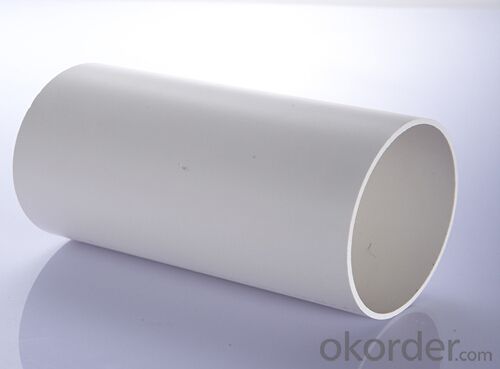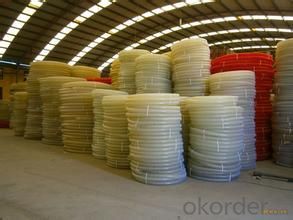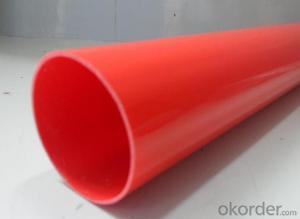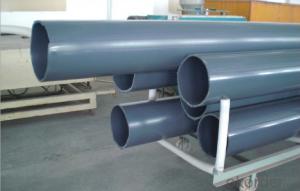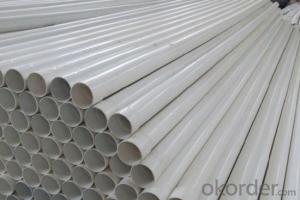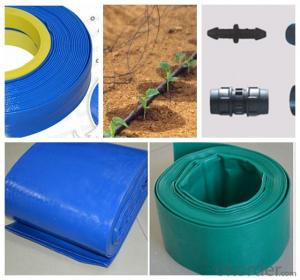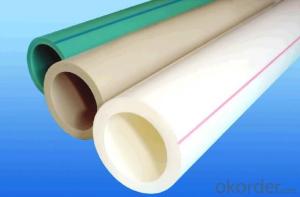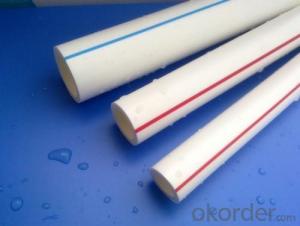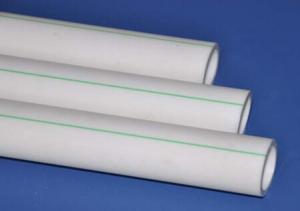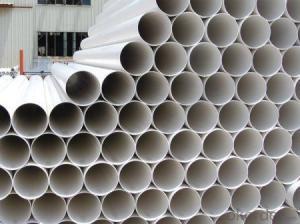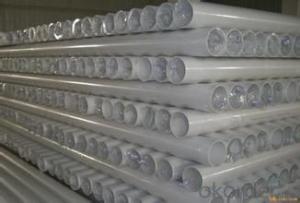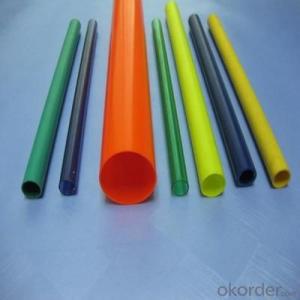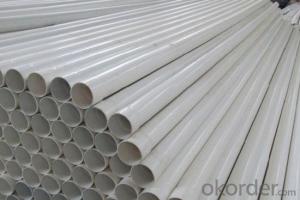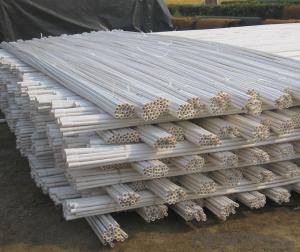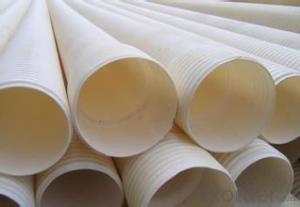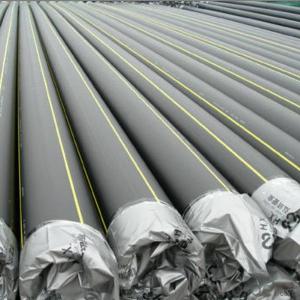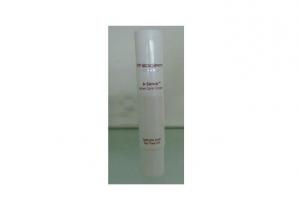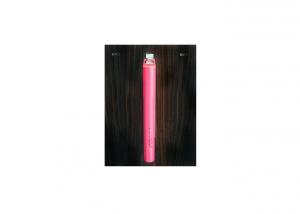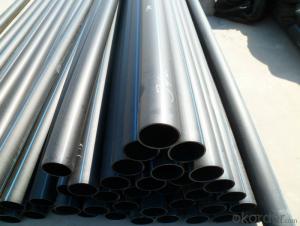Plastic Tubes PVC Pipe ISO14001 Specification:16-630mm Length:5.8/11.8m Standard:GB
- Loading Port:
- China main port
- Payment Terms:
- TT OR LC
- Min Order Qty:
- 500 m
- Supply Capability:
- 20000 m/month
OKorder Service Pledge
OKorder Financial Service
You Might Also Like
1.Description of PVC Pipe :
Material: Virgin Rigid PVC resin, no recycle material
Process: vacuum forming extrusion
Color: various colors, we can make color according to Panton card No.
Quality Standard: Smooth surface, no spot, no shrink mark, no surface quality defect.Check from cross section, homogeneous in density, good plasticizing degree, relative chemical/physical property meet customer requirement.
2.Features of PVC Pipes :
1)Light weight, easy to load and unload: PVC pipe is very light, convenient to handle loading unloading, and installing.
2)Good chemicals and drugs resistance: PVC pipe has its excellent resistance to the erosion caused by acids and alkalines, a great help to the chemical industries.
3) Good electrical insulation: excellent insulation nature against electricity. the pvc pipe can be served as conduits and pipes in construction cable and wire.
4) Small resistance to fluidity: The smooth surface reduces resistance to the fluids. Its roughness coefficient is only 0.009, much less than other pipes, Under same discharges, smaller cabibre of the pipe can be uesd.
3.PVC Pipe Images:
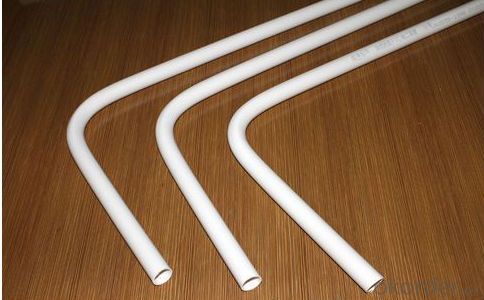
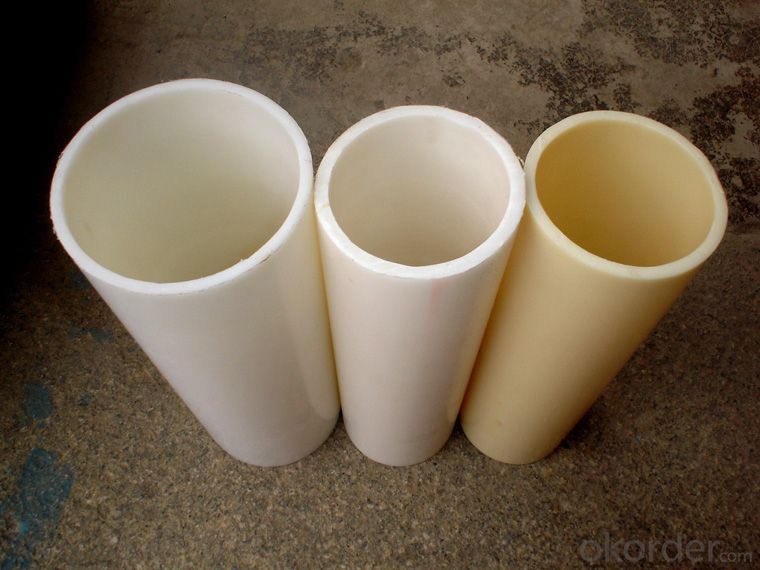
4.Specifications of the PVC Pipe:
1) Material: pvc pipe unplasticized polyvinyl chloride
2) Standard: GB, ISO9001, ISO14001
3) Color: white pvc pipe, grey pvc pipe , etc.
4) Specific Gravity:g/cm3, 20(C): 1.35 - 1.55
5) Vicat Softening Temperature: (C) >=79
6) Longitudinal Reversion: %, 150(C) <=5< span=""><>
7) Dichloromethane Resistance Test: No attack
5.FAQ
Q:What is the production ability? or delivery time?
A:Our production ability support 40HQ order finish in one week.
Q:What is your payment?
A:TT or CC.
Q:Can we have sample?
A:Sample free, freight cost you.
Q:For urgently doubts,who online?
A:Sales and marketing Manager 24hours online service.
- Q: What's the difference between the FPC tube and the PVC tube?
- FPC is the abbreviation of Flexible Printed Circuit, also known as flexible circuit board, flexible printed circuit board, flexible circuit board, referred to as soft board or FPC. It has the characteristics of high density, light weight and thin thickness.
- Q: What can soften the glue that sticks the plastic tube?
- Put into the water, so that it can prevent the plastic pipe damage, or can make the glue melt at high temperature.General decoration is hot melt method, followed by not glue. If it's glue, it's the PVC solvent. Demolition is not good, usually replaced.
- Q: What is the maximum temperature plastic tubes can be exposed to without deforming?
- The maximum temperature that plastic tubes can be exposed to without deforming depends on the specific type of plastic used. Different plastics have varying melting points and thermal stabilities. Therefore, it is important to consult the manufacturer's guidelines or material data sheets to determine the maximum temperature limit for a particular plastic tube.
- Q: Can plastic tubes be used for cable management?
- Yes, plastic tubes can be used for cable management. They are commonly used to organize and protect cables, providing a neat and clutter-free solution for managing wires and cords in various settings such as offices, homes, or industrial environments. Plastic tubes offer flexibility, easy installation, and can accommodate multiple cables of different sizes, allowing for efficient cable management and preventing tangling or damage.
- Q: I'm Assistant Directing a production of Hairspray! and need to find a piece of tube that a person can stand inside of for the Giant can of Ultra Clutch Hairspray. We thought to use huge cardboard tubes from Home Depot but the largest size they had was only 1' diameter. Corrugated plastic tubes wont work, it needs to be smooth like PVC or cardboard. A wood tube would be okay too
- If it exists try Broward Paper in Fort Lauderdale but 36 Diameter is real wide Maybe Ikea has something made from a light weight wood that is used as a table base
- Q: Ok im in 6th grade and we have to make a roller coaster with 3 hills and a loop..ANYONE KNOW WHERE I CAN GET CLEAR-FLEXIBLE TUBING???(Please dont say im too yooung i have permission to be on here) Please help urgent!Much appreciated
- any pet store with a fish section will typically have 3/8in clear plastic tubing... look in the bubble wall and air pump section for fish tanks.
- Q: There is a plastic tube under the motorcycle
- It's for oil drain. You got it down there?. It's over there, that's all.
- Q: Can plastic tubes be used for storing flammable substances?
- No, plastic tubes should not be used for storing flammable substances as they pose a higher risk of fire or explosion due to their low heat resistance and potential for chemical reactions.
- Q: I just bought a new diehard battery for my 07 nissan versa and taped to the Side was a little L shaped breather tube. I looked and there's a little hole on the side of the battery, where the breather fits. Do I need to use it? What does it do?
- No do not bother with it. The battery maker just puts it there as a waste of your time and money. Just let any overflow spill down the side of the battery and ruin it, it will be fine.
- Q: i'm just curious but, is it possible to use a plastic (case) tube as an optical fiber? i was searching and found this product that i had for along time now and it is a Eyeglass Repair Kit which has a plastic tube (case). is it possible to use this as a plastic acrylic tube?
- Optical waveguides work by total internal reflection, which occurs when light attempts to exit a dense medium into a less dense one. Optical fibers are constructed with a high-index-of-refraction material coated with a material with a slightly lower index. Light striking the wall of a hollow tube will pass into the tube wall. If you metalize the inside of the tube you can get a waveguide of a sort, but it will only work over a short distance because of lossy reflection. You're not remotely close to having anything you could make into a phase conjugate mirror, unless you have discovered some amazing new optical trick.
Send your message to us
Plastic Tubes PVC Pipe ISO14001 Specification:16-630mm Length:5.8/11.8m Standard:GB
- Loading Port:
- China main port
- Payment Terms:
- TT OR LC
- Min Order Qty:
- 500 m
- Supply Capability:
- 20000 m/month
OKorder Service Pledge
OKorder Financial Service
Similar products
Hot products
Hot Searches
Related keywords


